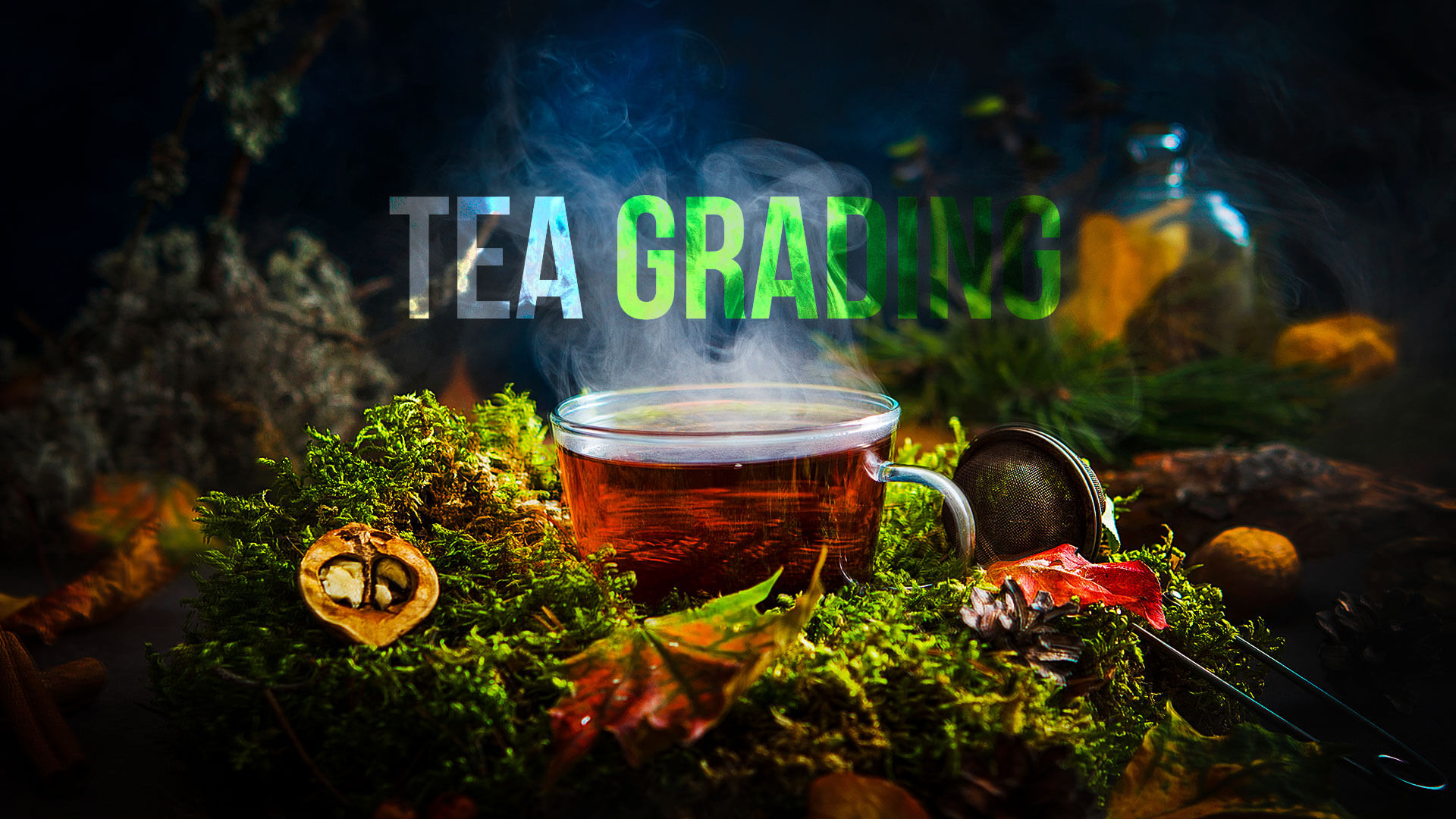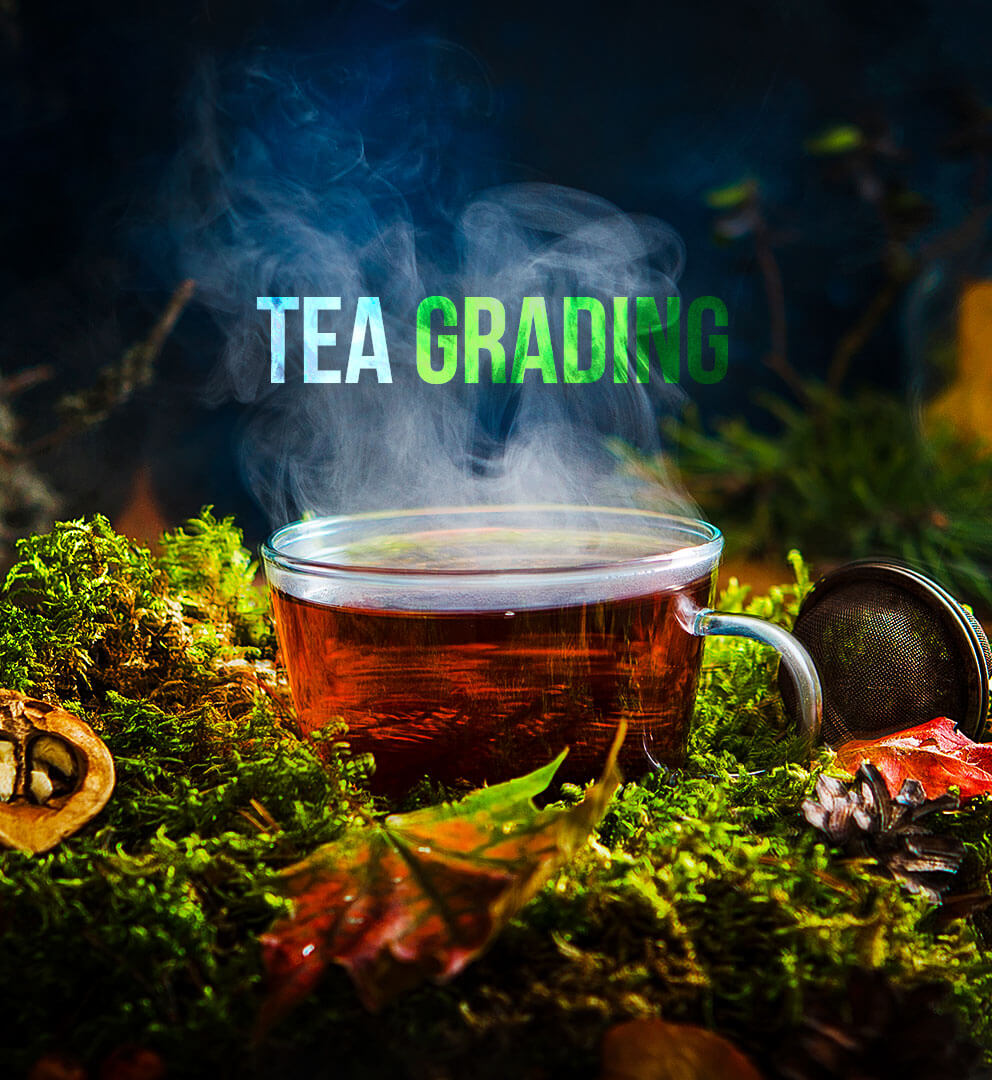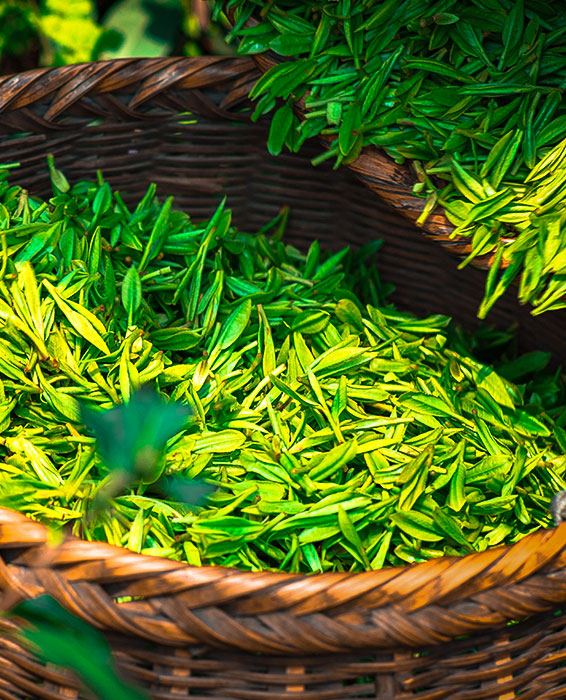


scroll to discover


scroll to discover
Tea quality is a direct reflection of the quality of leaf plucked. Smaller, tender leaves produce finer teas whereas larger, more leathery leaves produce coarser teas.
The best quality teas are made from fine plucking standards- which refers to plucking only two leaves and a bud. This is difficult to achieve with machine plucking as machines pick up stems along with leaves.
Jokai tea gardens follow a 100% hand plucking policy with a strict fine plucking mandate. This means that only the top two leaves along with their axillary bud are plucked every six days without deviation. This is done to ensure that only small, tender leaves are used for Orthodox tea production. This is a slower, more labor intensive and therefore a more expensive process but the end product is much superior to teas made from plucking larger leaves in the pursuit of quantity

The nomenclature for Orthodox Black Tea grades varies from country to country. Primarily there are four grades of Orthodox Black Tea based on the size (surface area) of the leaves, which are:
Whole Leaf Orthodox Black Tea refers to teas made from leaves in a way that the entire leaf is preserved during the four stages of black tea processing. Whole Leaf Black Teas are prized because of the superior taste, aroma and health benefits that comes from ensuring the entire leaf is rolled with minimal “breakage”. The better the “standard of plucking”, the more whole leaves one can manufacture during processing of tea. It requires skill, precision and experience to produce high quality Whole Leaf Orthodox Black Tea. Whole Leaf Orthodox Black tea grades are described as below based on their quality:
Good quality tea with a longer leaves and few tips, considered the second grade in Assam, Dooars, and Bangladesh teas, but the first grade in China.
High quality tea, with long, even and wiry black tea leaves with a sprinkling of golden tips. Yields a light brew high on flavor
Highest grade of Orthodox whole leaf black tea, with stylish, well rolled black tea leaves and a generous proportion of golden tips. Yields a classic brew with an optimum balance of flavor and strength. TGFOP1 grade is restricted to the finest leaves from the “first extraction” during processing and is referred to as a virgin grade indicating quality.
Contain more golden tips than black tea leaves – a luxury black tea grade usually restricted to small production window during the “second flush”. Yields a subtle, aromatic and nuanced brew prized by connoisseurs. STGFOP1 grade is limited to the most attractive leaves within the STGFOP classification
Broken Orthodox Black Teas refer to teas made from leaves which get broken or partially torn during the production process. The partial tearing of the leaves reduces the size of each leaf and increases the surface area available for oxidation. The result of this is that Broken Orthodox Black Teas are smaller in size, higher in strength and richer in mouthfeel. While brokens aren’t prized as much as whole leaf teas because of higher astringency, they form the backbone of most tea “blends” which provide the right balance of flavor and strength.
Broken Orthodox Black tea grades are described as below based on their quality:
Main broken grade. Prevalent in Assam, Sri Lanka, Southern India, Java, and China. Contains rolled black leaves with few / no tips.
Higher quality broken grade which contains tightly rolled and evenly sorted leaves with a sprinkling of medium tips. Yields a balanced brew prized in the Middle East. FBOP (SP) refers to specialty FBOP teas with a higher proportion of prized golden tips.
Smaller size of high quality broken grade which contain heavy and uniform tea leaves with a sprinkling of smaller tips. Yields a stronger brew prized in Germany / East Frisia. GBOP (SP) refers to specialty GBOP teas with a higher proportion of prized golden tips.
Highest quality brokens grade in Orthodox Black Tea. It is made from the “first extraction” (similar to the TGFOP1 grade which is the highest whole leaf grade). The “first extraction” refers to teas which are the first to enter and exit the process room and usually consist of the most perfectly sized leaves which require minimal handling / processing. GFBOP teas are prized because of a cup of this tea, when brewed strong, tends to “cream down” or provide a dense, viscous mouthfeel similar to the feeling of cream even when drunk black.
GFBOP (SP) refers to specialty GFBOP teas which contain an unusually high proportion of golden tips to black tea leaves.
Fanning Orthodox Black Teas refer to smaller tea leaves which are left over after higher quality whole leaf and broken teas are removed. Traditionally these were treated as the rejects of the manufacturing process in making high-quality leaf tea like the orange pekoe. However, the fannings of expensive teas can still be more expensive and more flavorful than whole leaves of cheaper teas.
Fanning Orthodox Black tea grades are described as below based on their quality:
Small, even sized particles of black tea leaves which are lighter in weight than brokens as they consist of the leathery parts of the tea leaves. May contain some golden tips, based on quality. Yields a strong brew with astringent notes compared to brokens or whole leaf teas. Primarily used in tea bags.
Dust Orthodox Black Teas refer to smallest particles of tea leaves which are left over during the processing of fresh leaves to black tea. These generally resemble a homogenous powder form and yield a cup is dark black, astringent and highly caffeinated. Dust teas are the lowest grade of tea and are used as price reducers in blends as well as an important component in lower quality tea bag teas.
Within the Dust category, Orange Pekoe Dust is the highest quality as it is bigger in size than other Dust grades and yields a more flavorful cup.

Follow & Share